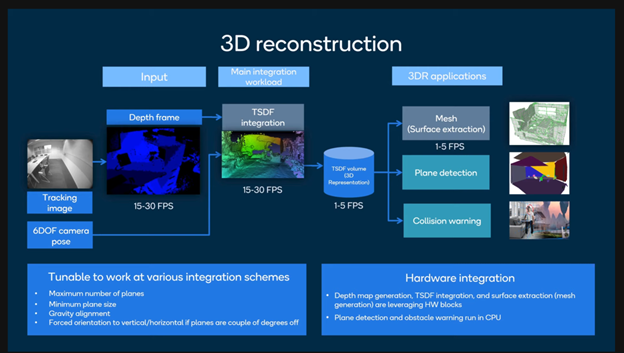Qualcomm has developed a real-time 3D reconstruction system that is very accurate and efficient, enabling the creation of highly detailed 3D models of any environment. The solution runs on a mobile device, generates depth maps from individual images, and combines them into a 3D scene representation. With real-time 3D maps, developers can create augmented and virtual reality applications. To showcase these capabilities, the company designed a demonstration wherein users can shoot virtual balls against real objects in the scene, such as walls and furniture, witnessing realistic bounces based on accurate physics calculations. This development promises immersive experiences and could accelerate the widespread adoption of the metaverse and VR.
Qualcomm has achieved a significant milestone, developing a real-time 3D reconstruction system that the company claims excels in both accuracy and efficiency. This development will enable users to create highly detailed 3D models of any environment, all from the convenience of a mobile device. By generating depth maps from individual images and combining them into a comprehensive 3D scene representation, virtual 3D models can be created quickly and almost anywhere.
The benefits of real-time 3D mapping systems have wide application, particularly in the realm of augmented and virtual reality. With an accurate and dynamic 3D map that is easily created, developers have access to many possibilities for immersive applications.

To showcase the capabilities of its innovation, Qualcomm designed an interesting demonstration. Users can now shoot virtual balls against real objects within the scene, such as walls and furniture, experiencing realistic bounces that are meticulously calculated based on accurate physics principles.

Qualcomm presented the system at the annual IEEE/CVF Conference on Computer Vision and Pattern Recognition (CVPR), one of the most important events not only in computer vision, but also the AI field. At the conference, which took place in Vancouver from June 18–22, Qualcomm showcased its accepted research papers and technology demos.
What do we think?
This new perception technology advances immersive experiences that could bridge the gap between the virtual and physical worlds, and advance the adoption of the metaverse. By enabling realistic and interactive interactions with digital content in real time, Qualcomm’s development creates new possibilities for augmented reality, virtual reality, and XR, whatever that is.